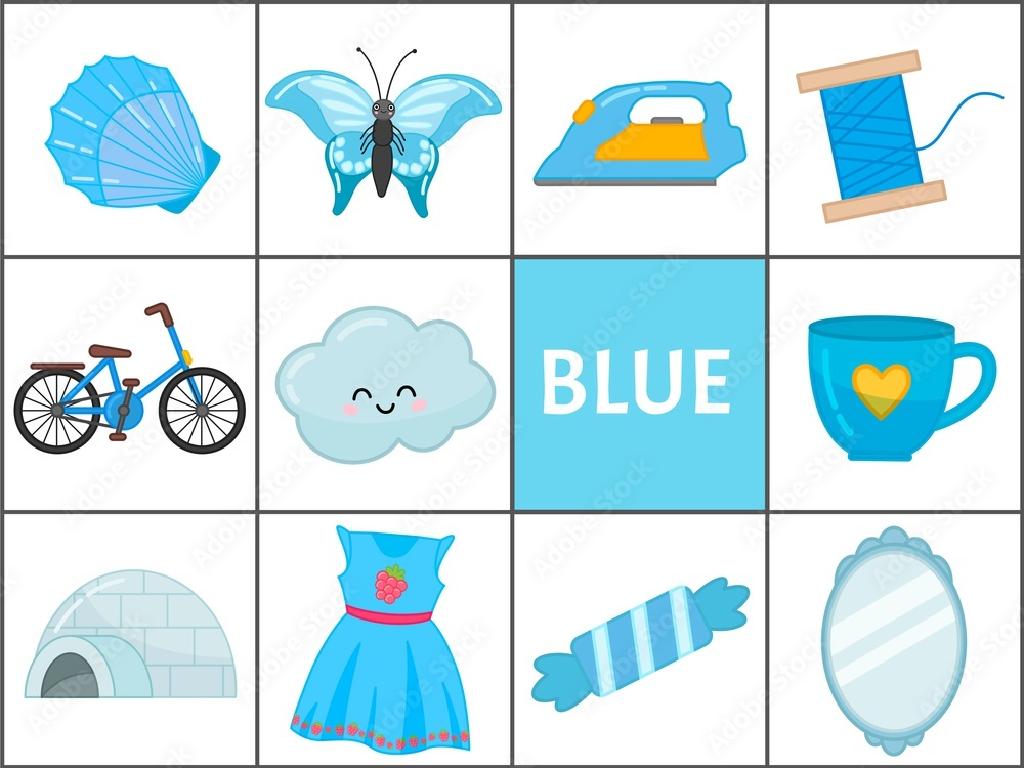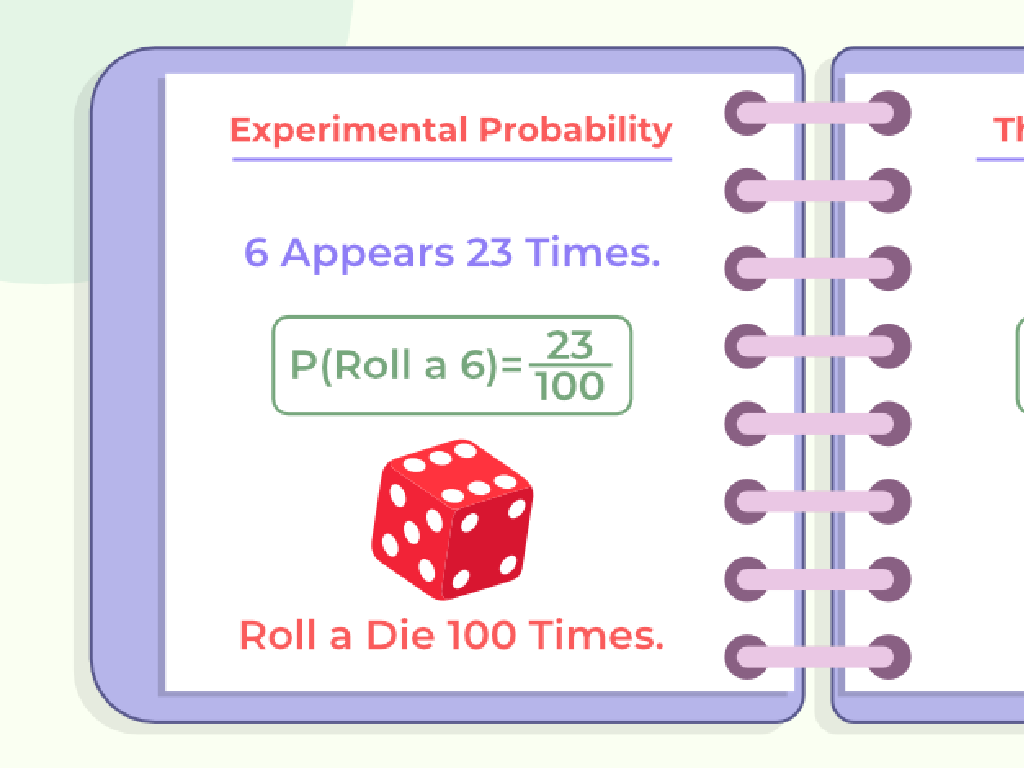Add 3 Or More Decimals
Subject: Math
Grade: Fourth grade
Topic: Add And Subtract Decimals
Please LOG IN to download the presentation. Access is available to registered users only.
View More Content
Introduction to Decimals
– Welcome to decimals!
– Decimals: What are they?
– Decimals represent parts of a whole, like 0.5 is half
– Decimals in daily life
– Used in money, measurements, and more
– Adding decimals together
– Learn to combine decimals, like money: $0.75 + $1.25
|
This slide introduces fourth-grade students to the concept of decimals, which are a fundamental part of mathematics and everyday life. Begin by welcoming students to the new topic with enthusiasm to pique their interest. Explain that decimals are a way to express fractions and parts of numbers, using real-world examples such as money and measurements to illustrate their use. Emphasize that understanding decimals is essential for many daily tasks, such as adding money or measuring ingredients for a recipe. The slide sets the stage for learning how to perform operations with decimals, starting with addition, which is a skill they will practice in subsequent lessons.
Review: Adding Decimals
– Quick recap: adding 1 or 2 decimals
– Line up the decimal points
– Place decimals one under the other so the decimal points are vertical aligned
– Sample problem on the board
– 0.75 + 1.2 becomes 0.75 + 1.20, then add
– Practice makes perfect
|
Begin with a brief review of the steps to add one or two decimal numbers, emphasizing the importance of aligning decimal points. Use visual aids on the board to demonstrate the process. For example, show how to properly align numbers with different decimal places by adding zeros if necessary. Work through a sample problem as a class, ensuring that students understand each step. Encourage students to practice with additional problems, providing immediate feedback and support. This will help solidify their understanding and prepare them for adding three or more decimals.
Adding 3 or More Decimals
– Today’s challenge: Add multiple decimals
– Align decimal points vertically
– Ensure all decimal points are in a straight line
– Start adding from the rightmost column
– Add like you would whole numbers, column by column
– Carry over if the sum exceeds 9
– Just like in addition, if a column adds up to 10 or more, carry over to the next column
|
This slide introduces students to the concept of adding three or more decimal numbers. Emphasize the importance of lining up the decimal points to ensure accurate addition. Begin with the rightmost column, which is the smallest place value, and add up each column just like whole numbers. If the sum of a column is 10 or more, remind students to carry over to the next column to the left. Use examples with varying lengths of decimals to show that empty places can be considered as having a zero. Encourage students to practice with different sets of numbers to gain confidence.
Adding Decimals: Step-by-Step Example
– Align decimal points vertically
– Add columns like whole numbers
– Decimal point in answer aligns
– Ensure the decimal point in the sum is directly below the others
– Practice with an example
– Example: 0.75 + 1.2 + 3.005 = 4.955
|
This slide introduces students to the process of adding decimals. Start by emphasizing the importance of lining up the decimal points, which helps in keeping the place values consistent. Compare this to stacking whole numbers for addition, which they are already familiar with. When adding, they should bring the decimal point straight down to the answer to maintain the correct place value. Finish with a guided example, such as adding 0.75, 1.2, and 3.005, to demonstrate the process. Encourage students to practice with additional problems and remind them that accuracy in aligning the decimal points is crucial for the correct answer.
Let’s Practice Adding Decimals!
– Try solving practice problems
– Ensure accuracy in your work
– Double-check your decimal points and sums
– We’ll discuss the solutions together
– Share any questions you have
– Don’t hesitate to ask for help if needed
|
This slide is designed to engage students in active practice of adding decimals. Provide them with a set of problems that require adding three or more decimals. Remind them to align the decimal points vertically to ensure accuracy. After they have completed the problems, go through the answers as a class to reinforce the learning and correct any misunderstandings. Encourage students to ask questions if they are unsure about any steps or answers. This will help them to clarify their doubts and solidify their understanding of the concept. Possible activities could include peer checking, using manipulatives like base-ten blocks or decimal grids, or creating their own problems to challenge classmates.
Common Mistakes When Adding Decimals
– Align decimal points correctly
– Stack numbers so decimals line up vertically
– Pay attention to carrying over
– Add digits, carry if sum is 10 or more
– Double-check your answers
– Review calculations to ensure accuracy
|
This slide aims to help students avoid common errors when adding decimals. Emphasize the importance of aligning decimal points, as this ensures that the correct place values are being added together. When carrying over, it’s crucial to add the carried number to the next column to the left. Always encourage students to double-check their work by re-adding the numbers or using estimation to verify their answers. Provide practice problems where students can apply these tips and discuss any mistakes they encounter.
Class Activity: Decimal Addition Race
– Form teams for a math race
– Work together on decimal problems
– Race to solve correctly first
– Celebrate the winning team
|
This activity is designed to encourage teamwork and reinforce the concept of adding decimals. Divide the class into small groups, ensuring a mix of abilities in each team to promote peer learning. Provide each team with a set of decimal addition problems that they must solve together. Emphasize the importance of accuracy over speed to avoid careless mistakes. The first team to complete their set correctly will be declared the winner. Have small rewards ready for the winning team to celebrate their success. This activity will not only make learning fun but also help students to understand the importance of collaboration and checking their work.
Conclusion & Next Steps
– Excellent work on decimal addition
– Homework: Decimal addition worksheet
– Complete the provided worksheet to practice adding decimals
– Practice is key to mastery
– Remember, the more you practice, the better you’ll get!
– Upcoming lesson: Subtracting decimals
|
Today’s class focused on adding decimals, a crucial skill in mathematics. Reinforce the concept by assigning a worksheet for homework, ensuring students get ample practice. Remind them that consistent practice is essential for mastering decimal addition. Preview the next lesson on subtracting decimals to pique their interest and prepare them for the continuation of learning about decimals. The homework will not only solidify today’s lesson but also serve as a stepping stone for the upcoming subtraction topic.






